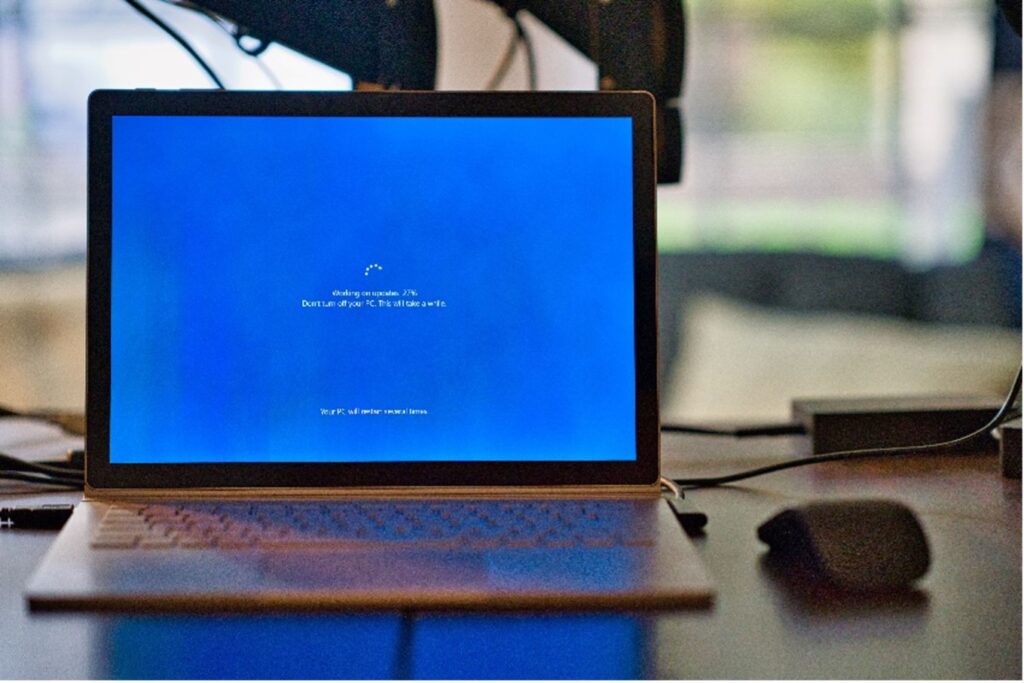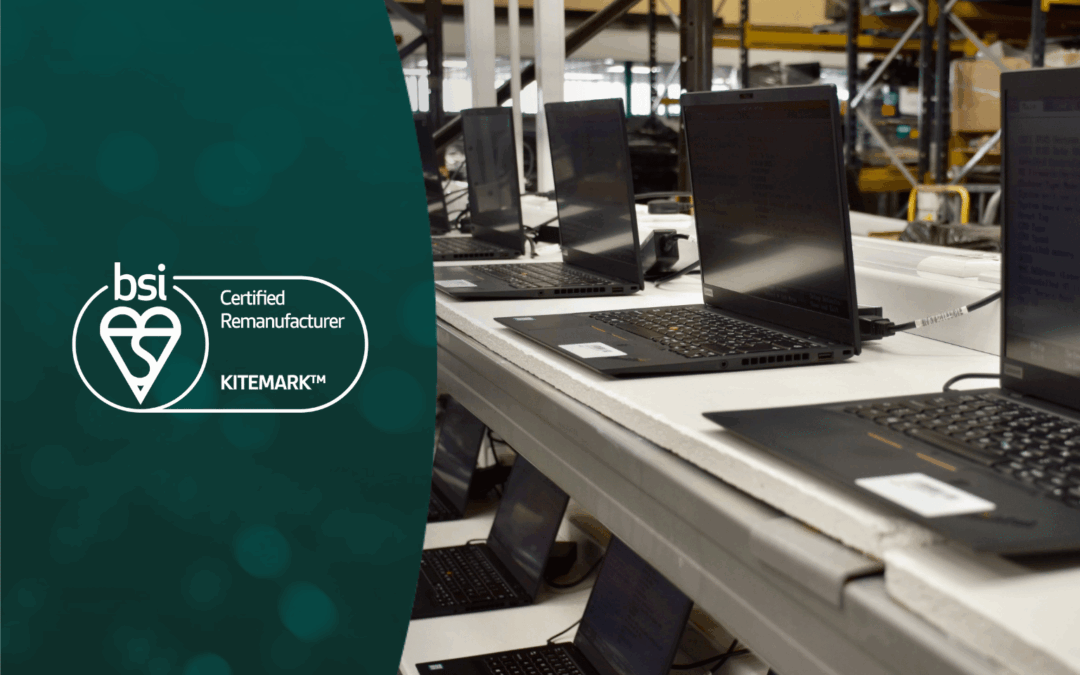What is IT lifecycle management? A quick Google search will deliver a broad definition relating to the overall management of a device from the moment it is removed from its original packaging to the moment it becomes a redundant IT asset.
As any CIO will tell you, it is somewhat more complicated. A juggling act, there’s a vast amount to consider and there are multiple challenges to solve. Yet, doing so is essential – ineffective processes could negatively affect productivity, efficiency, and profit; data governance issues may also arise if devices are not updated.
Conversely, a lifecycle management strategy provides maximum visibility across your entire infrastructure, helping you to reduce the overall costs of running your business and boosting that all-important bottom line.
By optimising the performance of your hardware, software and your employees themselves, you can maximise the lifetime value and ROI for your assets. Accurate forecasting will ensure that upgrade cycles can be undertaken at the optimal time. However, the level of monitoring, tracking and tasks required can be challenging and hugely time-consuming, leaving less time for other duties.

What are the common challenges of lifecycle management?
Infrastructure size.
As the total size of an organisation’s infrastructure increases, so does the scale of the task; this doesn’t just concern the quantity of devices but also the number of integrated systems. The rapid growth of the Internet of Things, and our use of mobile devices and smartphones have driven business efficiency, but for medium to large enterprises, it can mean that there are literally hundreds of thousands of assets and systems to keep track of.
Legacy systems.
Older systems will often involve an entirely different set of processes when it comes to their administration as these can require manual intervention. Retiring legacy equipment when it reaches end of life can streamline the overall asset management process, allowing the implementation of a single, automated approach across multiple systems.
Limited resources.
For some time, there has been a skills shortage within the IT industry. For organisations struggling to recruit, there may be an imbalance between available internal resources and the growth of the infrastructure that has to be managed – increasing the workload for the existing team and potentially dictating the rate of business growth.
Meanwhile, the fastest UK inflation rise for almost 40 years* means that IT budgets are just not going as far as they did a year ago; both factors are compounding making it harder to keep pace with technological advancement and planned lifecycle management.

Prioritisation.
The integration of new hardware, software and systems can interrupt operations; downtime is not ideal, although difficult to avoid during normal business hours. Internal teams need to set up, implement and deploy new equipment to meet the immediate demands of the changing business whilst also ensuring that the corporation has the IT resources it needs for the future. This can complicate prioritisation.
Technological advancements.
As a result of our digitalisation, our business technology is advancing at pace with the latest models offering increased functionality and complexity. The rapid evolution of our devices is leading to shorter lifecycles for our technology, increasing the rate at which devices.
Regulatory compliance.
In addition to EU and UK GDPR and specific industry legislations, businesses must comply with e-waste legislation, the 2014 WEEE directive. Laws relating to the responsible disposition of our technology and environmentally friendly ITAD are often difficult to keep track of. With the UK government focused on its target of achieving net zero by 2050 and the UN warning of severe consequences if we fail to address the climate crisis, regulatory compliance is ever-changing.

What are the benefits of IT lifecycle management services?
Data destruction services have moved far beyond secure data erasure and shredding. Providing third-party lifecycle management, IT asset disposal services have evolved to provide the support that stretched IT teams need in order to help them respond to the challenges faced – repositioning themselves as lifecycle businesses.
Instead of simply entering the process at the final stage of data erasure and disposal, they provide a reliable, full service throughout the four phases of an asset’s lifecycle – procurement, deployment, management and disposition. It’s a cost-effective strategy that can help you optimise your operational model, maximise value and enhance productivity.
IT asset disposition companies have a unique, all-encompassing position in this sector with expert knowledge of legacy systems, device depreciation, refurbishment and resale markets along with the scalability required to support vast enterprise infrastructures. Crucially, as ITAD services live and breathe data and e-waste regulations, they can keep you up to speed with the very latest legislative changes; guaranteeing your compliance, helping to protect company data and preventing any unnecessary headaches.
Existing IT infrastructure support.
With a complete overview of your IT infrastructure, a trusted third-party lifecycle management partner can provide post-warranty support for any existing device, OS/software installation, licence management, device maintenance, repairs or upgrades to increase RAM or replace the hard drive, for example.
Within larger organisations, it can be easy to lose full visibility of every device, an onsite audit will ensure that each data-bearing asset record includes serial and asset tags, its location and that it is linked to an employee. A complete inventory will help you keep track within your IT asset management system but it facilitates accurate planning and highlights redundant IT equipment that could potentially be reused.
As technology depreciates rapidly, it can be difficult to know exactly when to replace or upgrade devices, balancing productivity with ROI. Many businesses still commit to regular 3-year upgrade cycles, yet, regular maintenance and recurrent upgrades can extend the lifetime value of an asset substantially.
Utilising an older asset no longer necessarily means that it poses a security risk, is slow or incompatible with software. If professionally refurbished by accredited technicians, a 2-3-year-old machine can undergo full data destruction, performance upgrades and re-imaging. It can either be stored or immediately redeployed. After all, the vast majority of both internal and external components can be replaced – it saves significant sums and sees your business contribute to the circular economy model.
New IT infrastructure.
Extending the lifespan of our technology has obvious environmental and financial benefits. Although, new technology will always need to be built to specification to meet an organisation’s precise needs or
Supporting teams with the detailed and often protracted task of preparation, roll-out and installation, expert technicians can manage this entire process on your behalf – this includes everything from purchase, auditing and PAT testing through to desktop deployment and post-installation support. The installation of new systems can be actioned out of hours for minimal disruption.
Whilst it turned out to be highly beneficial for many organisations, the operational shift to a hybrid working model has made internal IT support harder. Incorporating legacy equipment collection, the installation of new assets, upgrades and software installation, your ITAD partner may also now offer as part of their comprehensive lifecycle management solution.
Traditional ITAD.
Whilst maintenance, refurbishment and redeployment can maximise lifecycles, end-of-life IT assets are inevitable.
An ITAD supplier can collect equipment and transport it within their own GPS-tracked fleet to their secure facilities. Highly accredited engineers will safely and securely decommission redundant IT equipment using the latest ITAD techniques and best practice. Data wiping services issue every device with its own IT asset disposal accreditation certificate, providing an ITAD chain of custody to demonstrate your legal compliance.
Environmentally friendly ITAD ensures that every component that can be cleansed, removed and recycled will re-enter the remanufacturing process. Through this process, you effectively sell redundant IT assets components; due to their extensive knowledge of the resale market, IT asset disposal companies will ensure that their client receives the residual value for these – often an unexpected revenue stream.

The advantages of outsourcing to a complete lifecycle management service extend beyond the convenience of alleviating pressures on internal resources. From procurement to disposal, a trusted, external partner can respond to all asset management challenges faced by internal IT teams. IT asset disposal services now provide a full-service, cost-effective solution which will help to inform decisions, streamlining your operational efficiency and team productivity – all contributing to substantially reducing your overall business operational costs.
*BBC
tier1 Asset Management take a circular approach to comprehensive IT Lifecycle Management.
Our highly accredited expert team support businesses with procurement, installation, upgrades, storage and deployment. Our out-of-hours, on-site data erasure services are designed to minimise downtime and disruption.
To find out more about our complete IT asset lifecycle management service – contact us on 0161 777 1000 (Manchester), 01621 484380 (Maldon) or visit www.tier1.com/contactus
Resources.
Worldwide Services, Red Hat, Tier1 Group, Environmental Protection Agency, CIO, Unduit, Essential Solutions.



